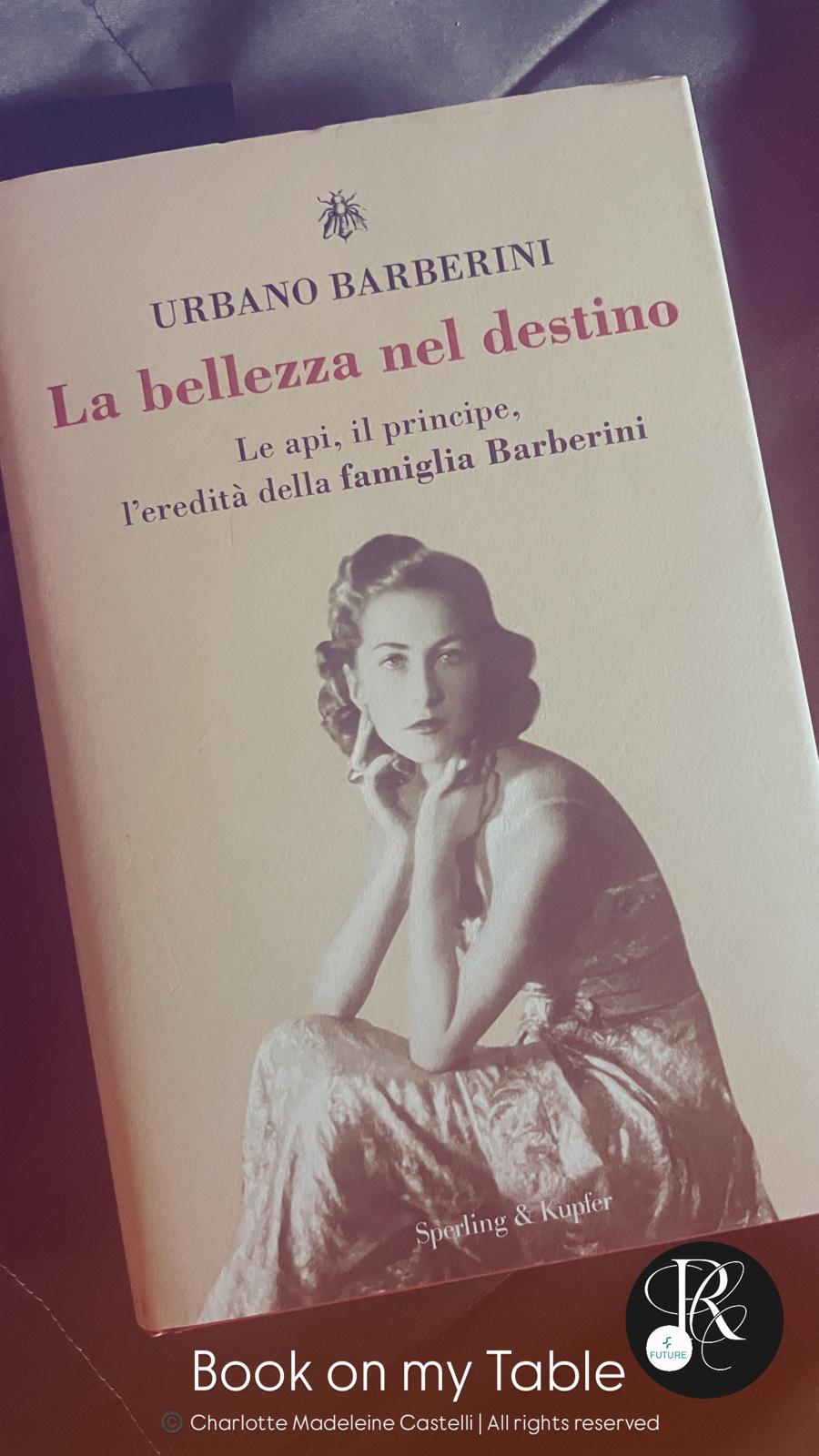Beauty in Destiny
On my table today lies a book that doesn’t merely ask to be read—it asks to be welcomed. It’s titled La bellezza nel destino (Beauty in Destiny), and on its cover glows a heraldic omen: three golden bees on a sky-blue background. The proud, vibrant, living symbol of one of the most important families in the history of Italian nobility—the Barberini. An emblem that speaks of labor, order, and harmony, but also of sweetness, resilience, and that kind of wisdom which only those who have journeyed across the centuries can still offer with grace.
BOOK ON MY TABLE
Charlotte Madeleine CASTELLI
7/11/20252 min read


On my table today lies a book that doesn’t merely ask to be read, but to be welcomed. It’s titled La bellezza nel destino (Beauty in Destiny), and on its cover glows a heraldic omen: three golden bees on a sky-blue background. The proud, vibrant, living symbol of one of the most important families in the history of Italian nobility, the Barberini. An emblem that speaks of labor, order, and harmony, but also of sweetness, resilience, and that kind of wisdom which only those who have journeyed across the centuries can still offer with grace.
Reading these pages feels like entering an ancient home and discovering, not dusty stuccoes or frozen coats of arms, but a warm, loving, affectionate voice. Urbano Barberini, a modern prince and a man of the theatre, writes not to celebrate himself, but to gently guide his son, little Maffeo, toward a tender and profound understanding of what it means to belong, not merely to a name, but to a much larger design made of shadows and light, of glory and silence.
The tone is noble, yes, but never haughty. With playful irony and narrative precision, Barberini reconstructs the sweeping saga of his family, offering the reader the impression of a legacy that still breathes, that still pulses beneath the stones of Rome. Monumental figures emerge with natural ease: Pope Urban VIII, refined patron and architect of the Baroque; Cornelia Costanza, a woman of spirit and vision; young Urbano, lost in war; Stefanella, carrying in her heart the fire of Italy’s earliest feminists. And then Nadia, widow and mother, a vigilant guardian of precious remnants of the past. Each figure is evoked with such care it becomes a quiet act of devotion, as if the author were laying down every word like a stone in a garden being patiently rebuilt.
Yet what makes this book truly precious is its spiritual modernity. It doesn’t merely recount a genealogy—it questions it. And it does so with a voice that is clear, emotional, and at times, strikingly poetic. It is the impassioned tale of a noble house that shaped the history of Rome—and beyond—but also the lucid and intimate portrait of a man who chooses to look into his own name, in order to pass down not its weight, but its meaning, to those who follow. Barberini invites us to consider beauty as a conscious inheritance, and destiny not as a privilege received, but as a calling to be embodied. In a passage that moved me deeply, he writes:
“True nobility lies not in what you inherit, but in what you are able to preserve with love.”
There, in that sentence, I found the most authentic key to the book. Transmission is never a passive act—it is creative, deliberate, a responsibility, and above all, a form of love.
La bellezza nel destino offers us a renewed sense that both personal and collective history can still illuminate the present. That symbols, when inhabited with grace, can become living signs. And that writing to one’s own child, while, at the same time, writing to all of us, might be the most radically noble gesture one can perform.
So today, this book sits on my table, not as a relic, but as a compass. Its golden bees continue to fly between the lines and through my thoughts, reminding me that there is still a beauty to be built slowly, with dignity and poetry.
A beauty that never ages.
A beauty that, perhaps, truly is part of our destiny.
© Charlotte Madeleine Castelli | All rights reserved
